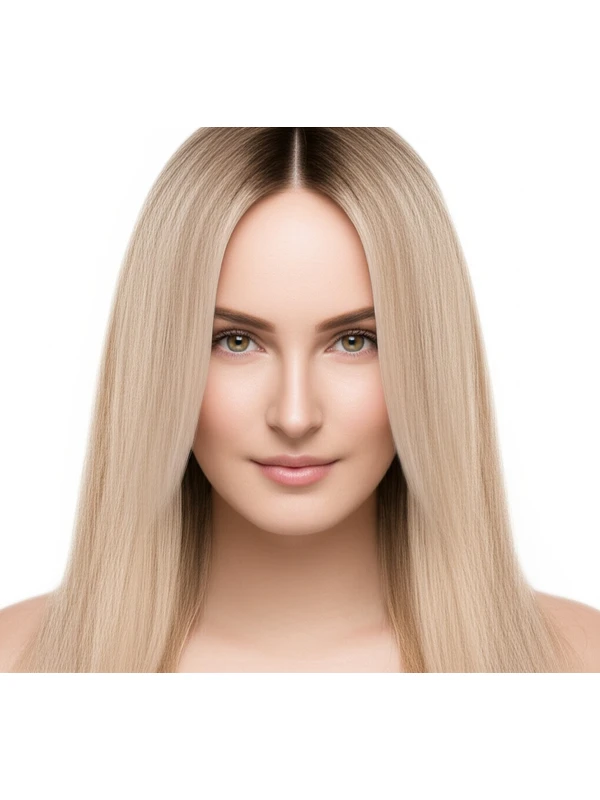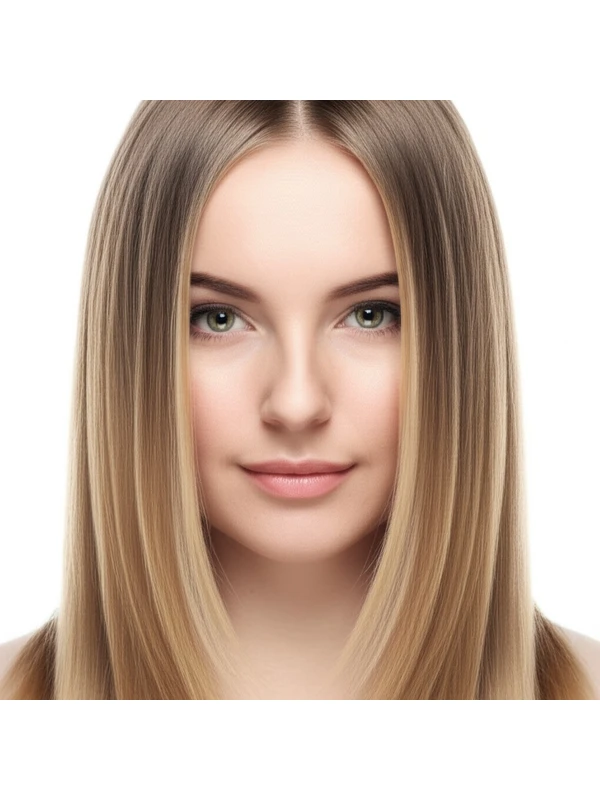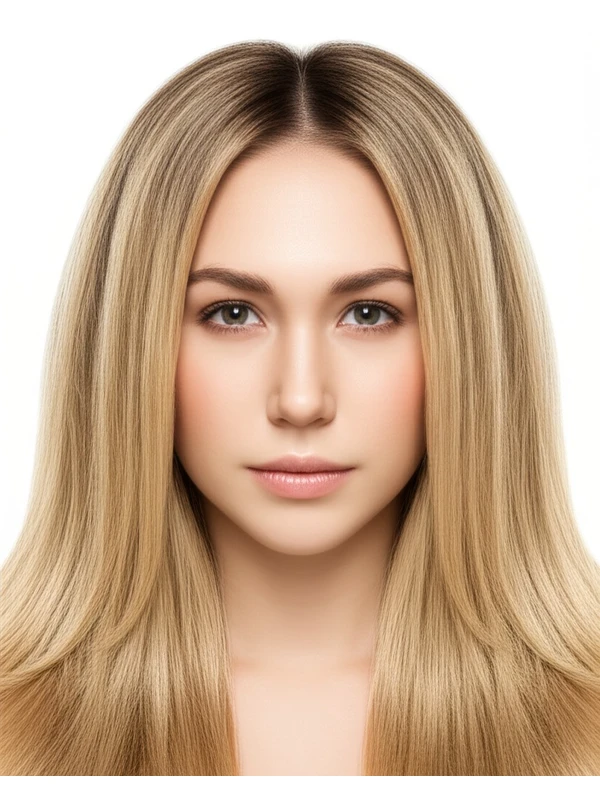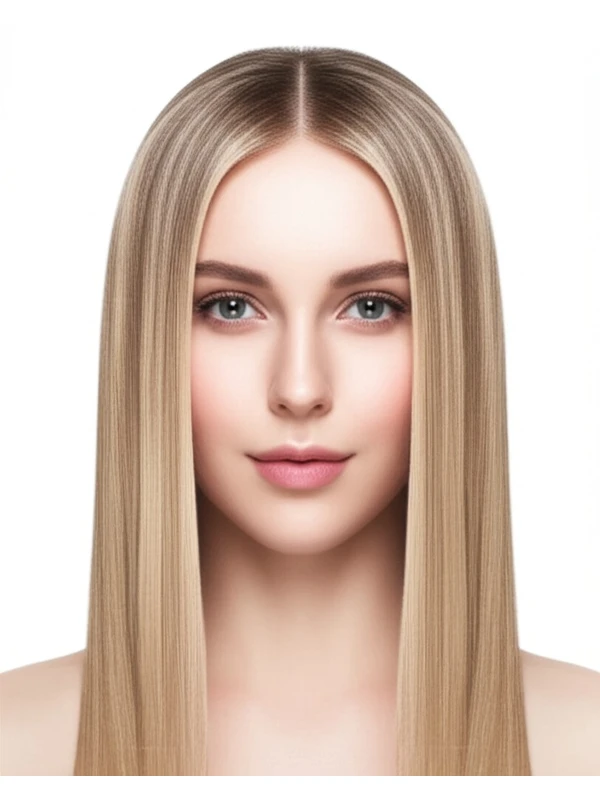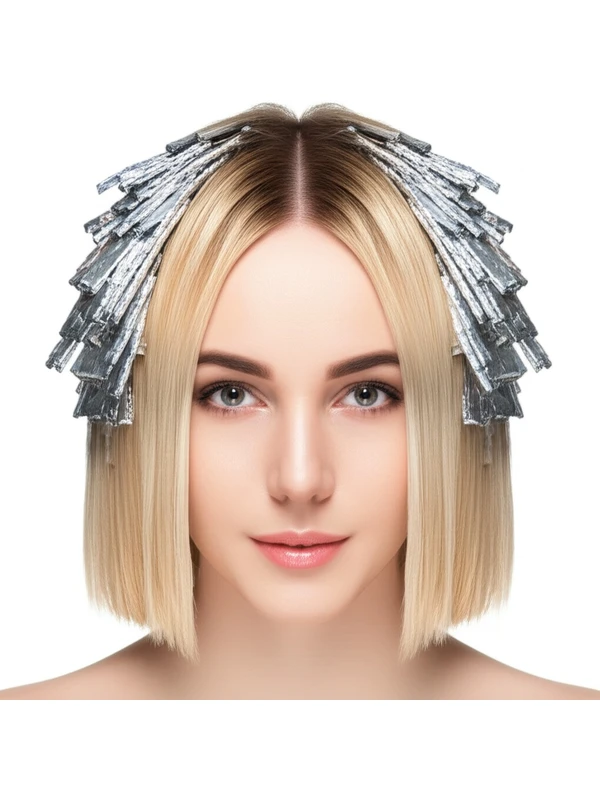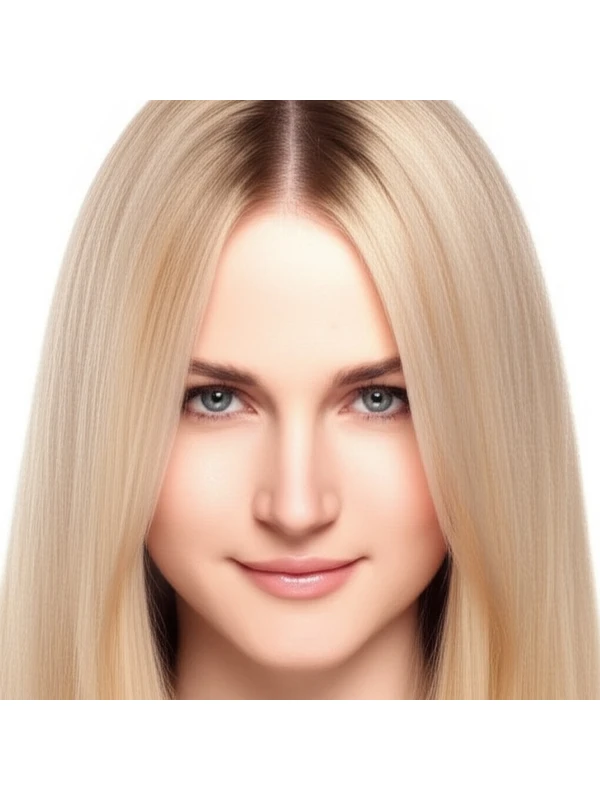#Partial Highlights: A Guide to Dimension and Shine
Partial highlights are a popular hair coloring technique used to brighten your look without committing to full-head lightening. They offer subtle or dramatic changes depending on how they’re applied. Here's everything you need to know about this versatile service.
#1. What Are Partial Highlights & How Do They Work?
Partial highlights involve strategically placing lightened strands throughout the hair, rather than coloring every strand from root to tip. This creates a more natural and blended look compared to full highlighting.
The Process:
- Tools: A stylist will use foils (thin strips of paper or aluminum), brushes, bowls for mixing color solutions, and sectioning clips.
- Placement: The placement is key! Highlights can be concentrated around the face (face-framing highlights), on the crown of the head to add volume, or scattered throughout for a more diffused effect. The stylist will weave strands of hair and wrap them in foil. A lightening product is then applied within each foil.
- Timing: Processing time depends on your natural color, desired lightness, and the strength of the lightener used. The stylist checks regularly to ensure even lift and prevent damage. Once the desired level is achieved, the foils are removed, and the hair is rinsed.
#2. What Can Partial Highlights Achieve?
Partial highlights aren’t just about brightness; they're a tool for achieving various aesthetic goals:
- Dimension: Adds depth and visual interest to flat or one-dimensional hair color.
- Root Blur/Shadow Root Effect: Strategically placed highlights can soften the line between your natural roots and colored lengths, creating an illusion of gradual growth.
- Face Framing: Brightens around the face to accentuate features and create a more youthful appearance.
- Subtle Coverage: Can help mask some gray hairs without a drastic color change. Think strategically placed highlights that blend with existing tones.
- Volume Boost: Highlighting the roots can lift hair at the crown, creating an illusion of added volume.
#3. Who Are Partial Highlights Best For?
Partial highlights are surprisingly versatile but work best for certain hair types and lifestyles:
- Natural Color Level: Works well on levels 2-6 (light brown to dark blonde). Those with darker starting colors might need multiple sessions or a stronger developer, which increases processing time.
- Undertone: Consider your skin's undertone! Warm highlights (golden, copper) complement warm skin tones (yellow/olive), while cool highlights (ashy, platinum) suit cooler skin tones (pink/blue). A stylist can help determine the best tone for you.
- Hair Type & Texture:
- Straight Hair: Highlights show up clearly and evenly.
- Wavy Hair: Adds movement and dimension to waves.
- Curly/Coily Hair: Requires careful placement to avoid disrupting curl patterns; highlights can enhance natural texture but also require extra moisture. Sectioning is critical for even lift across coils.
- Hair Density: Works on all densities, though the effect will be more noticeable on finer hair. Thicker hair may need more sections and foils for a balanced look.
- Hair Length: Suitable for all lengths, from short bobs to long layers.
- Lifestyle: Ideal for those who want low-maintenance color or want to refresh their existing highlights without a full commitment.
#4. Partial Highlights vs. Similar Techniques
It’s easy to get confused with hair coloring terminology! Here's how partial highlights differ:
- Balayage: A freehand painting technique that creates soft, blended highlights with no harsh lines. Balayage is generally more low-maintenance than foilyage or traditional highlighting.
- Foilyage: A combination of balayage and foil techniques – the color is applied as a balayage but then wrapped in foils to intensify the lift and achieve brighter results. This offers more control over the lightness compared to just balayage.
- Full Highlights: Lightens all strands of hair, resulting in a more uniform brightness.
- Root Smudge/Shadow Root: A technique used after highlights (or other lightening techniques) where color is applied at the roots to soften the demarcation line and create an ombre or shadow effect. It's not a highlighting method itself but complements it beautifully.
#5. Maintenance & Longevity
Partial highlights require upkeep, but with proper care, you can extend their vibrancy:
- Salon Timing: Expect touch-ups every 6-12 weeks, depending on how fast your roots grow and the desired level of brightness.
- Toner/Gloss Refresh: Toners are often applied after highlights to adjust the tone (e.g., neutralize brassiness) and add shine. Glosses seal in color and moisture. These may be needed every 4-8 weeks.
- Grow-Out Behavior: Highlights grow out with a natural root line, which can be blended with regular trims or shadow root applications. The more subtle the placement, the softer the grow-out will appear.
- Budget/Time Planning: Partial highlights are typically less expensive and time-consuming than full highlighting but still require a significant investment in both.
#6. At-Home Care Tips for Highlighted Hair
Proper care is essential to maintain color vibrancy and hair health:
- Wash Cadence: Reduce washing frequency (2-3 times per week) to prevent color fading.
- Heat Protection: Always use a heat protectant spray before using styling tools like blow dryers, straighteners, or curling irons.
- Color-Safe Care: Use sulfate-free shampoos and conditioners specifically formulated for colored hair.
- Deep Conditioning: Incorporate deep conditioning treatments into your routine to replenish moisture lost during the highlighting process. Purple shampoo can help neutralize brassy tones (use sparingly).
#7. Pros & Cons of Partial Highlights
Pros:
- Adds dimension and brightness without a full commitment.
- Versatile – suitable for various hair types, lengths, and lifestyles.
- Can soften the appearance of gray hairs.
- Generally less damaging than full highlighting.
- Lower cost and time investment compared to full highlights.
Cons:
- Requires regular salon visits for maintenance.
- Highlights can fade over time.
- Potential for brassiness if not properly toned or cared for.
- Can be tricky to achieve a natural look without professional expertise, especially on curly/coily hair.
#8. Salon Consultation Script – What Your Stylist Will Ask
To ensure you get the perfect partial highlights, your stylist will likely ask these questions:
- What are your goals for this appointment? (e.g., more dimension, face-framing)
- Do you have any photos of highlight styles you like?
- Have you colored your hair recently? If so, what products were used?
- Are there any areas you don’t want highlighted?
- What is your budget for this service?
- How much time can you realistically commit to salon visits and at-home care?
- Do you have any sensitivities or allergies to hair color ingredients?
#9. Frequently Asked Questions
- Can I do partial highlights myself at home? While possible, it’s best left to professionals, especially if you're new to highlighting. Uneven results and damage are common with DIY attempts.
- How long does a partial highlight appointment take? Typically 2-3 hours, but this can vary depending on hair length, density, and the complexity of the technique.
- Will highlights damage my hair? Any lightening process can cause some degree of damage. A skilled stylist will use gentle products and techniques to minimize impact. Regular deep conditioning is crucial for repair.
- Can partial highlights cover gray hairs completely? Partial highlights can blend grays, but complete coverage usually requires a permanent color application.
- What’s the difference between face-framing highlights and money piece highlights? "Money Piece" refers to thicker, more impactful face-framing sections meant to really brighten the front of your hair; they are typically brighter than traditional face-framing.
- How do I prevent my highlights from turning brassy? Use a purple shampoo or conditioner once a week and avoid excessive heat styling. Your stylist can also apply a toner during the appointment to neutralize brassiness.
- Can I get partial highlights if I have previously had balayage done? Yes, but it's important for your stylist to assess the existing color and plan accordingly to avoid unwanted tones or uneven lift.
- How much will partial highlights cost? Prices vary by salon and location, but expect to pay anywhere from $100-$350+.
